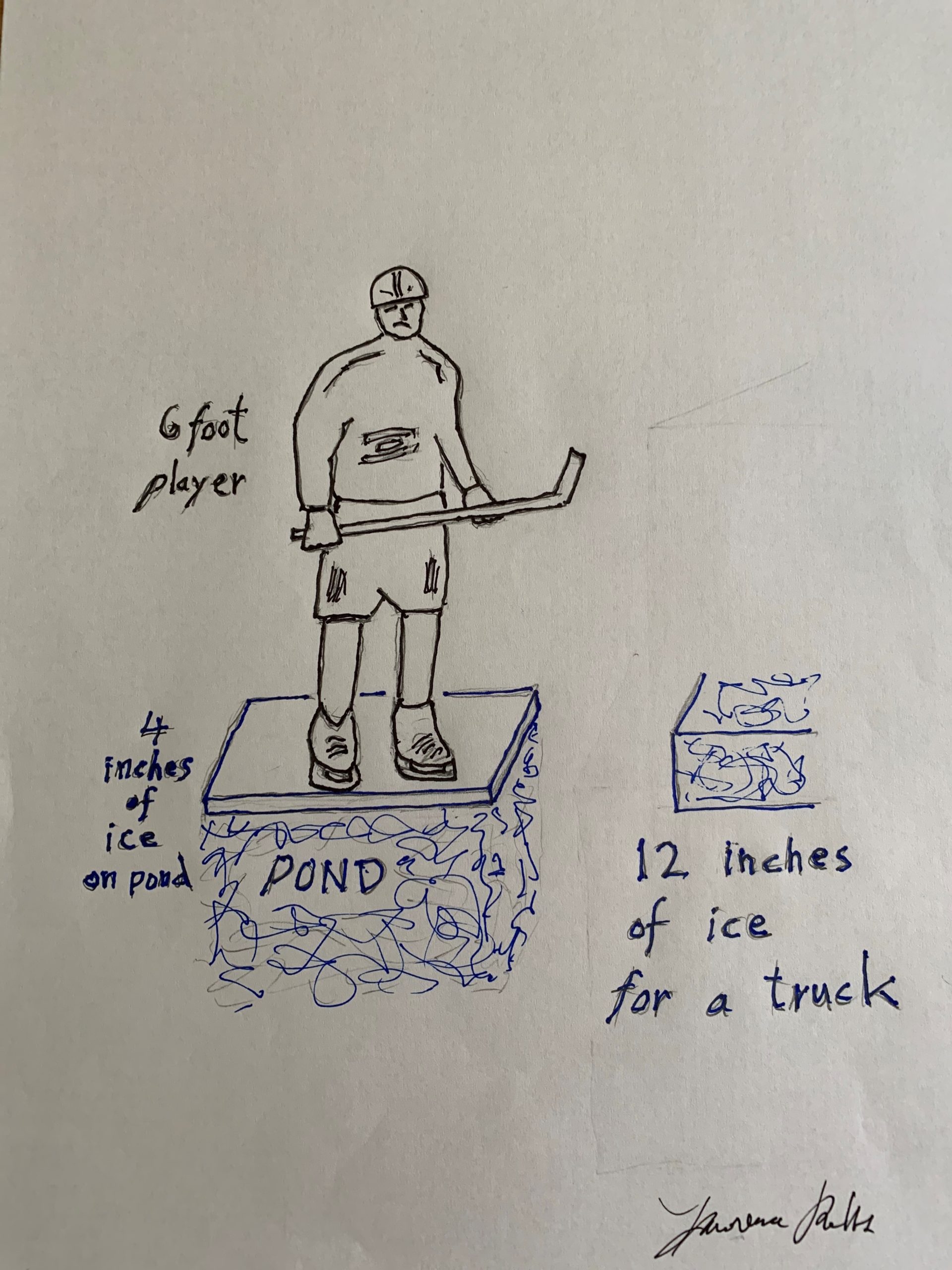Dr. Rocks' Blog!
What Thickness of Ice is Required for Hockey Played on Ponds?
Answer: About 12-15 inches for team play; 3 inches for one person.
The weight that pond ice can support increases with the thickness of the ice "squared". For example, two inches of ice supports two times two, or four times, the weight of just one inch of ice. Ten inches of pond ice thickness would support ten times ten, or one hundred, times the weight that just one inch of ice could support.
The pond ice floats on water, whereas the ice in a professional hockey rink rests on the concrete base of the arena. For this reason, rink ice need be just one inch thick.
Pond ice forms in winter as cold air blows over the pond, this results in pond ice forming slowly. The slower the rate of formation the more perfect will be the ice that forms. Slow ice formation will result in stronger ice.
Nevertheless, the pond ice is not perfect in crystalline form under any set of natural conditions. It has fractures and air bubbles in it. The ice also has has debris from the pond water, such as twigs, bugs, and dust. Imperfections make the pond ice weaker than it would be if it were without those cracks, air bubbles, and pond debris.
The weight of players pond ice can support depends upon the weight of the players as well as on their activity. Teams of players converging in play action will stress the ice more than will the same players standing still for a team picture.
Cold water dissolves more air than does warm water, so pond ice has a maximum amount of trapped air bubbles in it. However, the cold water below the pond ice has a maximum amount of oxygen for fish that live under the ice throughout the winter time. So, it's best for the fish, and the hockey players, that the pond ice form slowly as winter slowly replaces autumn.

Picture: A player on one inch of pond ice vs. a truck on one foot of pond ice.

